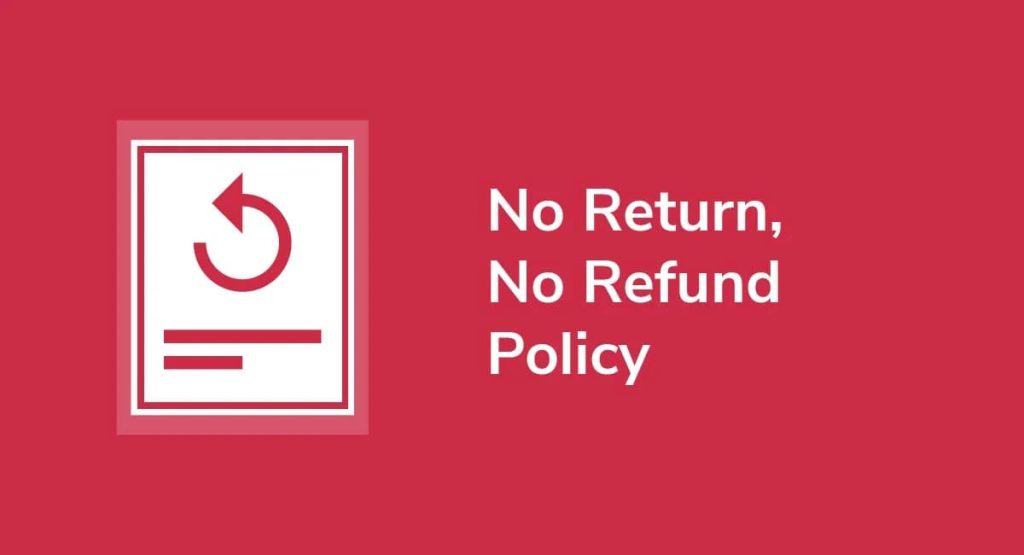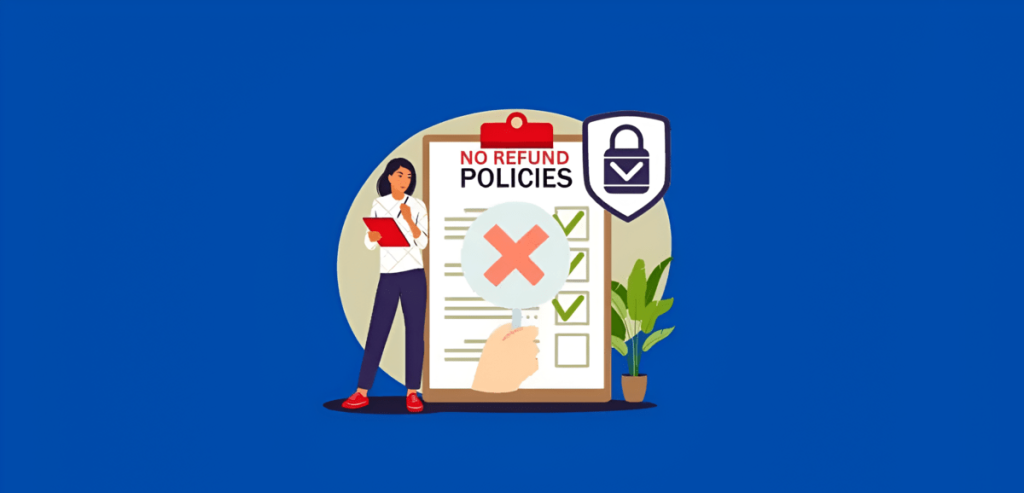A No Refunds Policy is a clear statement that refunds will not be issued under certain circumstances. This policy is crucial for businesses dealing with products like digital goods, perishable items, or services that cannot be resold. This article provides an analysis of no refunds policies, focusing on types, legal considerations, and practical implications, supported by data and real-world examples.
Introduction to No Refunds Policies
A no refunds policy sets customer expectations and protects your business from unnecessary disputes. Clear policies can prevent chargebacks, which account for 25% of revenue loss in many sectors, according to Checkout.com. By clearly communicating your refund policy, you minimize the risk of chargebacks and enhance operational efficiency.
Types of No Refunds Policies
There are several variations of no refunds policies, tailored to different industries and product types:
- All Sales Final: Commonly used for clearance or discounted items, this policy prohibits all returns and refunds.
- Exchange Only: This policy allows customers to exchange products but not receive a refund. It’s prevalent in fashion retail.
- Store Credit: Instead of a refund, customers receive store credit for future purchases, which helps retain revenue within the business.
- Time-Limited Refunds: Some businesses offer refunds within a specific period but restrict them afterward. For example, digital subscription services may allow cancellations only within the first 14 days, similar to Netflix.
Here’s a breakdown of the key features of different policies:
| Policy Type | Industries | Products | Return/Refund Options |
|---|---|---|---|
| All Sales Final | Fashion, Food & Beverage | Clearance, perishable goods | No refunds or exchanges |
| Exchange Only | Fashion, Accessories | Clothing, shoes, accessories | Exchange for other products |
| Store Credit | Retail, Online Stores | General goods, fashion | Store credit for future purchases |
| Time-Limited Refunds | Digital Goods, Subscriptions | Software, streaming services | Refunds within a limited window |

Legal Considerations
Understanding legal frameworks is crucial when setting a no refunds policy. Laws differ by region and product type.
United States
In the U.S., businesses can set their own return policies, but some states, like California, require clear disclosure if refunds are not available within seven days of purchase.
Europe
The EU Consumer Rights Directive mandates a 14-day cancellation period for online purchases. However, exceptions exist for digital goods that have been accessed or downloaded, provided the customer consents to this when purchasing.
Australia
Australian law prohibits blanket no refunds policies for faulty goods. Businesses can, however, refuse refunds for a change of mind, making it essential to draft policies that comply with these legal requirements.
Failing to adhere to these legal frameworks can lead to penalties and harm a company’s reputation.
Benefits and Drawbacks of a No Refunds Policy
Implementing a no refunds policy offers several benefits but also comes with potential downsides.
Benefits
- Reduced Administrative Burden: Managing returns and refunds can consume significant resources. No refunds policies streamline processes.
- Minimizes Return Fraud: Refund fraud costs U.S. retailers approximately $12 billion annually. A clear policy helps deter fraudulent refund requests.
- Increased Revenue: Businesses with strict refund policies see up to a 15% increase in revenue, according to a Visa study.
Drawbacks
- Customer Dissatisfaction: Strict policies may deter potential buyers. A Braintree study indicates that 30% of consumers hesitate to purchase if the return policy is too restrictive.
- Legal Risks: Poorly drafted policies can result in legal challenges, particularly in regions with strong consumer protection laws.
Examples and Case Studies
Different industries adopt various no refunds policies to suit their needs:
- Digital Goods: Companies like Apple and Google do not offer refunds for digital products unless required by law. In the EU, however, refunds must be offered within 14 days unless waived by the customer.
- Subscription Services: Netflix and Spotify typically do not offer refunds after activation, though they do provide free trials to reduce customer dissatisfaction.
- Event Ticketing: Ticketmaster only provides refunds if an event is canceled, postponed, or rescheduled, ensuring revenue protection.
For businesses seeking to protect themselves against disputes related to refund policies, partnering with a specialized service is crucial. Merchanto.org, a recognized partner of VISA and MasterCard, offers expert chargeback prevention. Companies using Merchanto.org have reported a 20% reduction in chargebacks within the first year, making it a valuable resource for businesses implementing no refunds policies.

Best Practices for Implementing a No Refunds Policy
To implement an effective no refunds policy, consider the following:
- Transparency: Clearly display the policy on your website, especially at checkout. Ensure customers must agree to it before completing a purchase.
- Offer Alternatives: Consider providing store credit or exchanges instead of denying all refunds. This approach can maintain customer satisfaction while protecting revenue.
- Time-Limited Refunds: If a strict no refunds policy isn’t feasible, offer a limited refund window, such as 7 days after purchase, to balance customer satisfaction with business protection.
- Legal Compliance: Regularly review your policy to ensure it complies with applicable laws, especially if you operate in multiple regions.
Real-World Data on Refund Policies
Below is a table comparing industries that commonly use no refunds policies:
| Industry | % of Companies with No Refund Policies | Typical Refund Window | Customer Satisfaction Rate |
|---|---|---|---|
| Digital Goods (e.g., apps) | 85% | None | 75% |
| Fashion Retail | 60% | 14-30 days (limited returns) | 65% |
| Subscription Services | 90% | None (some trials) | 80% |
| Event Ticketing | 95% | No refunds unless canceled | 70% |
Conclusion
A No Refunds Policy must be carefully drafted to protect your business while respecting legal obligations and maintaining customer trust. By following best practices—such as transparency, offering alternatives, and ensuring legal compliance—you can implement a policy that minimizes disputes and chargebacks.
By adhering to these guidelines, your business can create a no refunds policy that effectively protects your bottom line while maintaining customer satisfaction.



